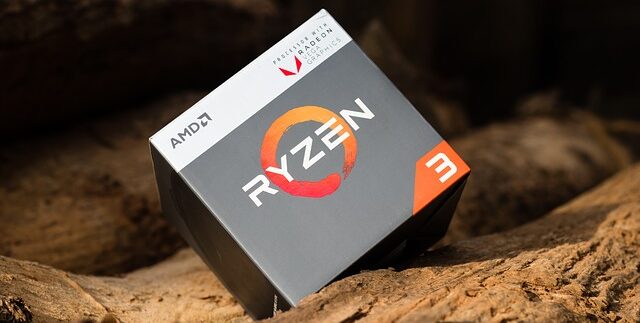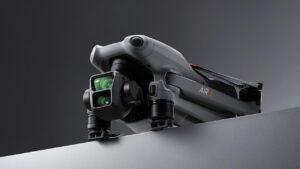Intel. Intel, then long nothing, then the AMD’s. If TikTok wasn’t your first social network, you’d remember the time when Intel was the undoubted leading CPU manufacturer. Far behind and often a more budget solution, were the other companies, led by AMD. But those days are gone, and… Yes, the question pops right in mind, is Ryzen better than intel?
For those who don’t know, Ryzen is a brand marketed and designed by AMD (Advanced Micro Devices) that consists of x64-86 microprocessors. Ryzen processors are used in desktops, servers, mobiles, and other ZEN microprocessors embedded devices, just like Intel CoreLet’sessors.
Yes, Ryzen is better than Intel in several aspects. But without analysis of AMD and Intel microprocessors, their features and specifications, their models, their price tags and launch dates, and their CPUs comparison, to give a perfect answer, is Ryzen better than Intel?

Ryzen in the Old Days
After the launch of the Intel Core i7-6950X 6th generation series in May 2016, a high-end desktop CPU having a single 10-core processor manufactured by Broadwell-E architecture, yup, that’s when Ryzen happened.
In February 2017, AMD released its Ryzen 7-1800X 1st generation processors were able to compete with Intel’s Core i7-6900K 6th generation processors, and the manufacturer of the 1st generation Ryzen 1000 series was in ZEN architecture.
But just like any first-generation device, the new Ryzen processor’s architecture was not perfect. Although first-generation Ryzen chips were giving outclass performances with multi-core processors, they lagged in Instruction Per Clock (IPC) and clock speeds.
Anyhow, the good part is that Ryzen didn’t back out there. Instead, it evolved with the passage of time. On April 29, 2018, AMD released its 2nd gen Ryzen processors based on the refined ZEN+ architecture with improved overall clock speeds and increased performance.
At this point, Ryzen clearly brought the fight to Intel. The 2nd gen flagship Ryzen 7-2700X processor with 8 cores and 16 threads won the battle with Intel 8th gen Core i7-8700K flagship processor having 6 cores and 12 threads.
When AMD was on a continuous ascent, Intel, on the other hand, got itself stuck with 14nm core chips. Failing to migrate to the 10 nm manufacturing process in time, Intel had no choice but to provide software mitigation to minimize massive security vulnerabilities, which resulted in further performance reduction of its processors.
If we come back towards the present, it would be right to say that Ryzen is beating Intel in most aspects. The latest AMD’s Ryzen 9 CPU with 16 cores is the fastest and most powerful processor on the planet right now compared to Intel’s Core i9 processor with 8 cores, but let’s have a look at the details.

What are the Differences between Ryzen and Intel Processors?
Ryzen and Intel are the two most popular and relatively competitive brands, just like macOS and Windows. Where AMD is leading the PC gaming world with its high-end Ryzen Threadripper 5000 desktop series processors, Intel is launching its new 11-gen processors based on Rocket-Lake microarchitecture to catch back.
However, when it comes to the world of laptops and mobile processors, Intel, due to its more experience and time, seems to be leading it. This is because you wouldn’t be able to find much Ryzen 5000 mobile series devices as there are of Intel’s Tiger Lake microprocessor series. (When you come to pure efficiency, you’ll also have to talk about Apple Silicons M-Series, but we’ll stick to non-ARM CPUs here.)
For a better perspective, let’s discuss the differences between desktop and laptop processors in detail.
Ryzen vs Intel Desktop Processors
Both AMD and Intel have their offerings of great desktop machines to handle a variety of tasks such as transcoding, gaming, and video editing. The specialties of these devices vary depending on your budget and the purpose you want them for.
For instance, there is no need to spend a huge sum of 1799$ on a Ryzen 2990-WX Threadripper if what you want is to do some work and play games. A budget-efficient 300$ Ryzen 5 5660-X is a fantastic choice with a high boost frequency and Hexa core processor for gaming and working.
On the other side, Intel offers its Core i5-11600K in the same price range and performance capabilities that match Ryzen 5600-X with 6 cores count and a good clock speed. The 11600K has a higher TDP in this regard. However, making Ryzen a better choice over Intel for most budget managing enthusiasts.
Furthermore, if we go down to a low-budget option, the Ryzen chips provide us with high value for money. The AMD’s standouts like Ryzen-3600 and Ryzen-3300X processors offer high levels of gaming experience and multi-tasking abilities. Intel’s Core i3-10300F is a recognizable competition, though.
To sum up, right now, among desktop processors, going with AMD Ryzen is the best choice. Soon after Intel’s hybrid desktop processors release based on Alder-Lake microarchitecture, tables may turn around.
Ryzen vs Intel Laptop Processors
The laptop space has a whole different story than the desktop space. Without a doubt, Intel has the lead in here, as once a Dell representative indicated that Intel has a much bigger and stronger portfolio than AMD. This is the reason why you see more laptops with various generations of Intel processors inside them.
Intel’s Core i9-10980HK 10th-gen mobile processor is the most powerful, with 8 cores and a max turbo frequency of 5.3 GHz, in the laptop market today and can be taken as the best example.
Also, it’s not that AMD is too far behind in the race, with Microsoft Surface Laptop 3 and Acer Swift 3 Laptop having Ryzen 5 mobile processor inside, AMD has shown some great advancement in the laptop market.
In addition to that, Lenovo, a popular laptop manufacturing brand, also refreshed its Legion high-end gaming laptops with advanced Ryzen 4000 APUs to provide a better gaming experience. On the competitive side, Intel has its Ice-Lake APUs with more capable 11th-generation graphics and proficient design.
So, to conclude, both Intel and AMD are producing promising-level laptop machines for gaming and work and providing us with a great number of options to choose from depending on our needs. However, you’ll mostly find an Intel-based laptop winning this market easily.
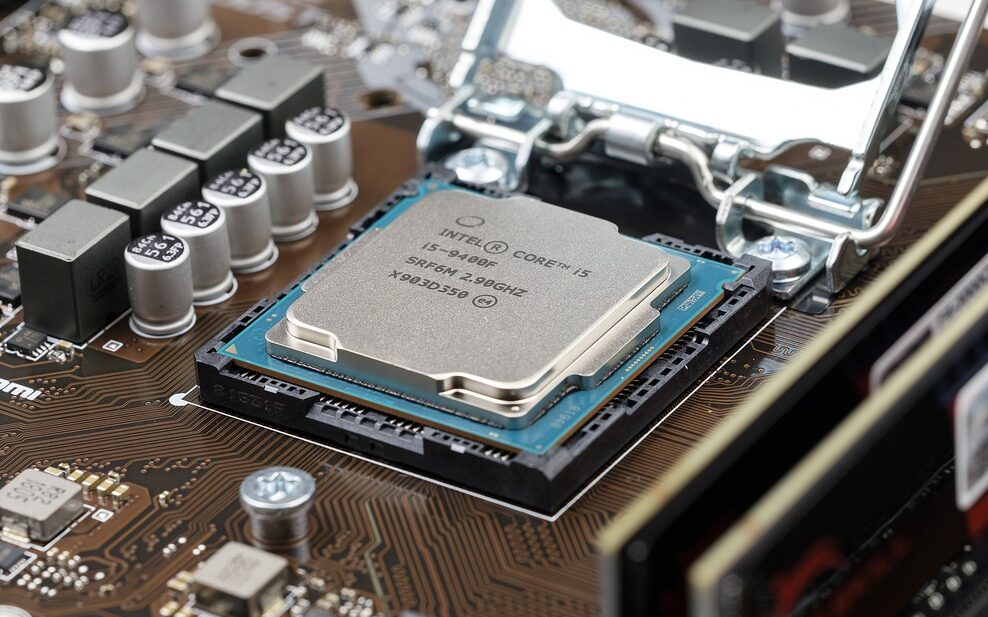
Ryzen and Intel CPUs Features and Specifications
There are five basic tiers that are common in each series or generation of both AMD and Intel desktop CPUs. For AMD, there are Ryzen 3, Ryzen 5, Ryzen 7, Ryzen 9, and Ryzen, Threadripper in line, whereas Intel has its Core i3, Corei5, Core i7, Core i9, and Lake-X families.
Furthermore, each chipset in the respective family has its offering of multiple products that differ based on their features and specifications. From low-end desktops to pro desktops, here we have gathered every detail you need to know about each tier.
So following are the sections:
- Low-End Desktops
- Mid-End Desktops
- High-End Desktops
Ryzen vs Intel CPUs for Low-end Desktops
Let’s have a look at how Ryzen and Intel go head-to-toe for low-end desktops.
Also, most low-end desktop customers go with second-hand graphics cards, which is why we have this complete guide that you can follow to learn more about How to buy a used graphics card in 2022?
Our Low-End Recommendation:
For a low end processor, you can never go wrong with AMD RYZEN 7 1700X.
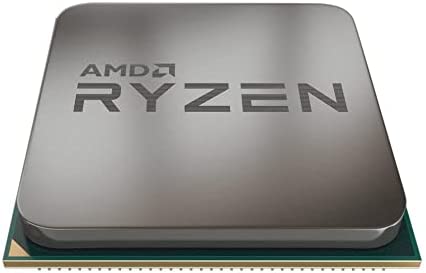
How Ryzen CPU is better than Intel CPU for Low-end Desktops?
Ryzen 3 processors are considered low-end desktops in every generation of AMD CPUs. They are cost-effective, have the good processing power, and are greatly used for entry-level tasks. The three generations of Ryzen processors are based on multiple ZEN architectures.
All models of the Ryzen 3 processors include:
- Up to 4 cores and 4 threads, greatly effective in multi-tasking.
- Memory up to 64 GiB dual-channel, can handle more data at once and increases performance.
- Frequency power starts from 3.1 GHz and can range up to 3.7 GHz with turbo boost, providing a good quality gaming experience.
- Power consumption TDP is 65 W for all models, which helps in controlling the billing budget.
- The technology of Precision Boost, XFR, SMEP (only enabled on X versions), enhances the overall experience.
How Intel CPU is better than Ryzen CPU for Low-end Desktops?
The low-end Intel’s desktop CPUs are Core i3 processors that are present in each generation. They are also less costly, built for entry-level handling tasks, and provide good performance abilities. The generations of these Intel processors are based on Coffee Lake Microarchitecture.
All models of Intel’s Core i3 processors include:
- Up to quad cores and quad threads, providing great multi-tasking abilities.
- Memory up to 64 GiB with ECC support, which significantly reduces the problems and increases the user experience.
- Frequency ranges from 2.1 GHz to 4.2 GHz with turbo boost, enhancing the overall efficiency of the system.
- Power consumption is up to 65 W in standard-power mode and up to 35 W in Low-power mode, helping in maintaining your budget.
- Variety of new technologies such as EPT, VT-x, SGX, VT-d, Memory protection, Secure Guard, and much more help in improving your overall experience.
- Integrated GPUs with bursts of higher refresh rates increase your gaming experience.
Ryzen vs Intel CPUs for Mid-range Desktops
If you own a mid-range desktop, we have got you in our Ryzen vs. Intel breakdown.
Our Mid-Range recommendation:
After long hours of study, we suggest you buy an Intel Core i5-9400 if you want to go in the mid-range section.
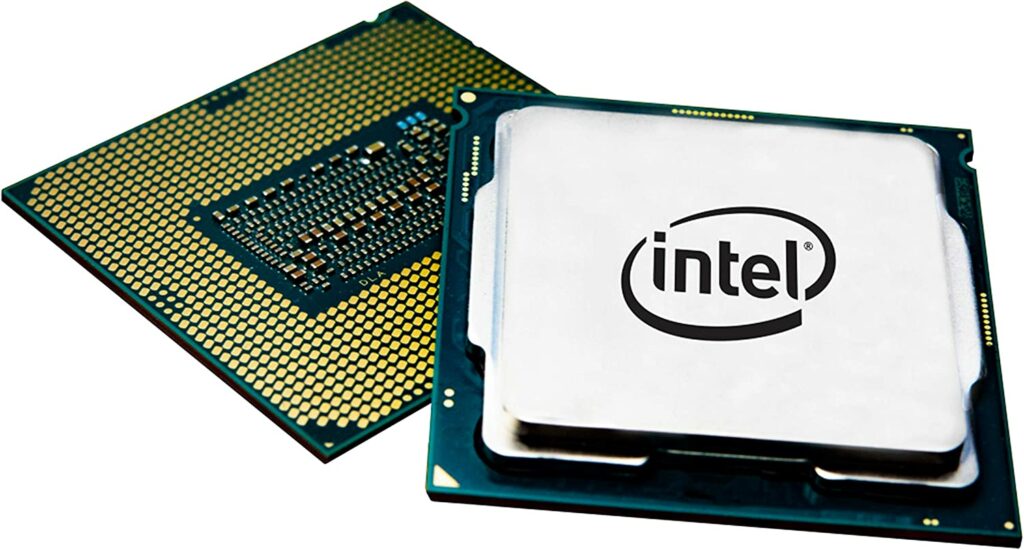
How Ryzen CPU is better than Intel CPU for Mid-end Desktops?
AMD’s Ryzen 5 CPUs are mid-range desktops that are manufactured by multiple ZEN architectures. These processors are a little high-budget but provide you with greater performing speeds and efficient multi-tasking abilities that can make your day more productive.
With the family of Ryzen 5 processors, you will get:
- Up to 6 cores and 12 threads, more effective processing and multi-tasking abilities.
- Memory up to 128 GiB dual-channel, perfect for handling a considerable amount of data at once.
- Frequency ranges from 3.2 GHz to 4.5 GHz through turbo boost, decreasing the game latency and increasing frame rates per second.
- Power consumption TDP ranges from 65 to 95 W depending on the model, advanced components consume more power to provide a better experience.
- Increased IPC due to an additional L3 cache memory, enhanced branch prediction unit, and a wider FPU datapath. (only available in ZEN 2 architecture)
- Improved technology of Precision Boost 2, an additional 2-way SMT, and SMEP.

How Intel CPU is better than Ryzen CPU for Mid-end Desktops?
Intel has its Core i5 CPUs family that can be considered in the mid-range desktops. These Coffee Lake-based chipsets have no support for hyper-threading due to the doubling of the core count. However, the increased number of cores significantly enhances the performance capabilities of these processors.
Moreover, every Intel Core i5 model has these features in common:
- Up to Hexa cores and Hexa threads that are responsible for multitasking.
- Frequency power can be increased up to 3.95 GHz with a turbo boost.
- Memory is up to 64 GiB with dual-channel support.
- Comes in three power modes, the higher-power mode is 95W, the standard-power mode is 65W, and the low-power mode provides you with 35W power consumption.
- Improved technology of MPX, SpeedStep (EIST), Identity Protection (IPT), and others.
- Have integrated GPU (UHD Graphics 630) which provides turbo bursts from 1.05 to 1.15 GHz.
Ryzen vs Intel CPUs for High-end Desktops
Ryzen and Intel both have their high-end desktop CPUs, and they can be a real deal for a lot of people. Let’s uncover them.
Our High range recommendation:
As we looked after several different processors it all comes down to Ryzen 9 5900 we suggest buying it if you are looking for a high end processor.
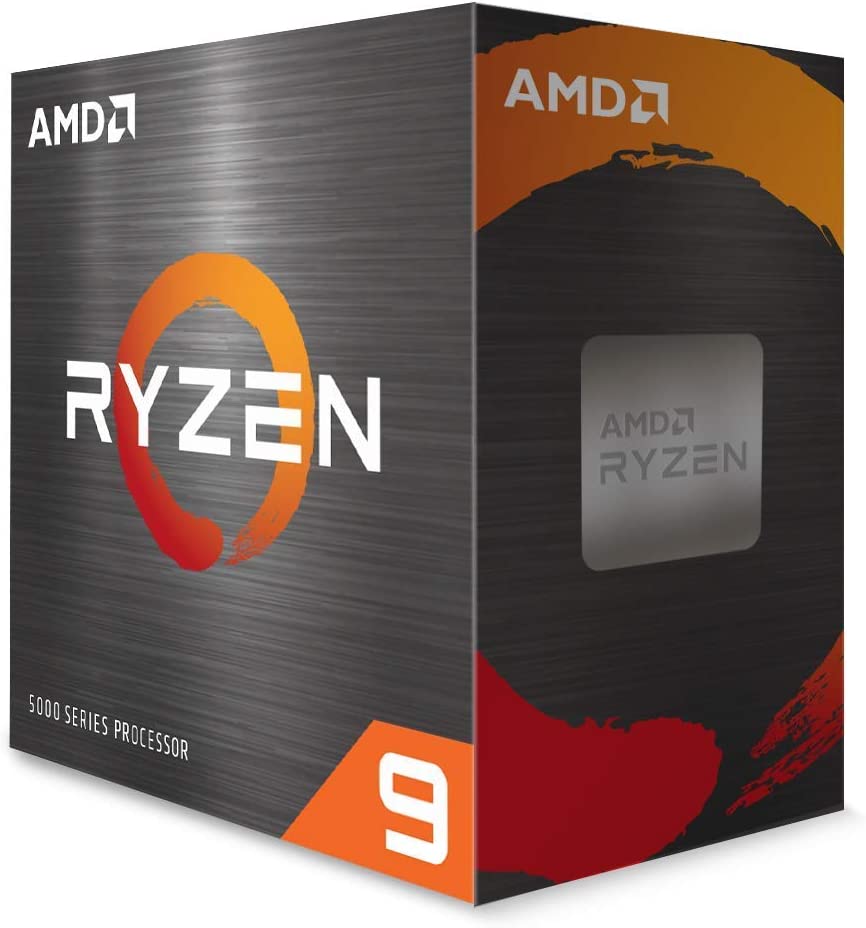
How Ryzen CPU is better than Intel CPU for High-end Desktops?
The high-end AMD’s desktops are of the Ryzen 7 and Ryzen 9 chipset families. These processors come with incredibly high cores, and threads count to provide the enthusiasts with the best high-level performances they can get. Features and specifications of the latest high-end Ryzen 7 processors based on ZEN 2 microarchitecture models are as below:
- Up to 8 cores and 16 threads for incredible multitasking capabilities.
- Increased Instructions Per Clock (IPC) because of double L3 cache memories.
- Improvement to a more modest clock frequency over ZEN+ architecture-based models.
- Memory is up to 128 GiB with dual-channel support of 3200 MT/s DDR4.
- Enhanced technology of Precision Boost 2, 2-way SMT, and SMEP.
- Frequency ranges from 3.1 GHz to 4.7 GHz on max turbo.
- The power consumption is up to 105W depending on the model built.
Now, if we talk about Ryzen 9 microprocessors, they are manufactured on 7 nm TMSC’s process also based on ZEN 2 microarchitecture, and every model comes with:
- Up to 16 cores and 32 threads hexadec microprocessors.
- Memory support is up to 128 GiB of dual-channel 3200 MT/s DDR4.
- Provides higher clock speeds and more fast Instructions Per Clock (IPC).
- The power consumption TDP is up to 105W depending on the model.
- Frequency ranges from 3.1 GHz to 4.9 GHz on max turbo.
- Improved performance-maximizing technology of Precision Boost 2, SMEP, and 2-way SMT.
How Intel CPU is better than Ryzen CPU for High-end Desktops?
Intel, on the other hand, has its Core i7 and Core i9 high-end desktop processors that are in competence with AMD Ryzen 7 and Ryzen 9 series, respectively. But due to the comparatively low core and thread counts, these microprocessors lack in providing relatively higher performance speeds.
However, based on Coffee Lake microarchitecture with the same standard LGA-1151 Socket use, Intel’s Core i7 models have:
- Up to 6 cores and 12 threads along with hyperthreading support.
- Memory support is up to 64 GiB of quad channels DDR4.
- TDP power consumption has three power modes of (HP) 95W, (SP) 65W, and (LP) 35W.
- Integrated GPU (UHD Graphics 630) with turbo bursts of 1.2 GHz.
- Frequency ranges up to 5 GHz with max turbo from the base frequency of 2.4 GHz.
- Improved prior technology of Turbo Boost, SpeedStep (EIST), MPX, and new technology of vPro, SIPP, and TXS.
For Intel’s Core i9 microprocessors based on Coffee Lake Refresh architecture, the increase in the core count has made significant performance changes with premium prices. All core i9 series models provide you with:
- Up to 8 cores and 16 threads with the support of Hyper-threading.
- Memory can extend up to 128 GiB of dual-channel 3200 MT/s DDR4.
- Integrated GPU (UHD Graphics 630) with bursts of 1.2 GHz.
- Enhanced technology of Turbo Boost 2.0, EIST, MPX, and SGX.
- Power consumption TDP is up to 127W from 35W.
- The base frequency is 2.1 GHz that can reach up to 5 GHz with Turbo Max 3.0
Ryzen vs Intel CPUs for Pro Desktops
After low-end, mid-end, and high-end CPUs by both big names, they also have a Pro category that is exclusive for professionals only (or those with a gib enough wallet 😉 ) Let’s disclose them to know the right one for you.
How Ryzen CPU is better than Intel CPU for Pro Desktops?
Ryzen Threadrippers are the most powerful AMD’s pro-desktop processors available in the market right now. Due to an incredible increase in the core count, these chips provide you with outclass performances with great multi-tasking abilities used in heavily threaded applications.
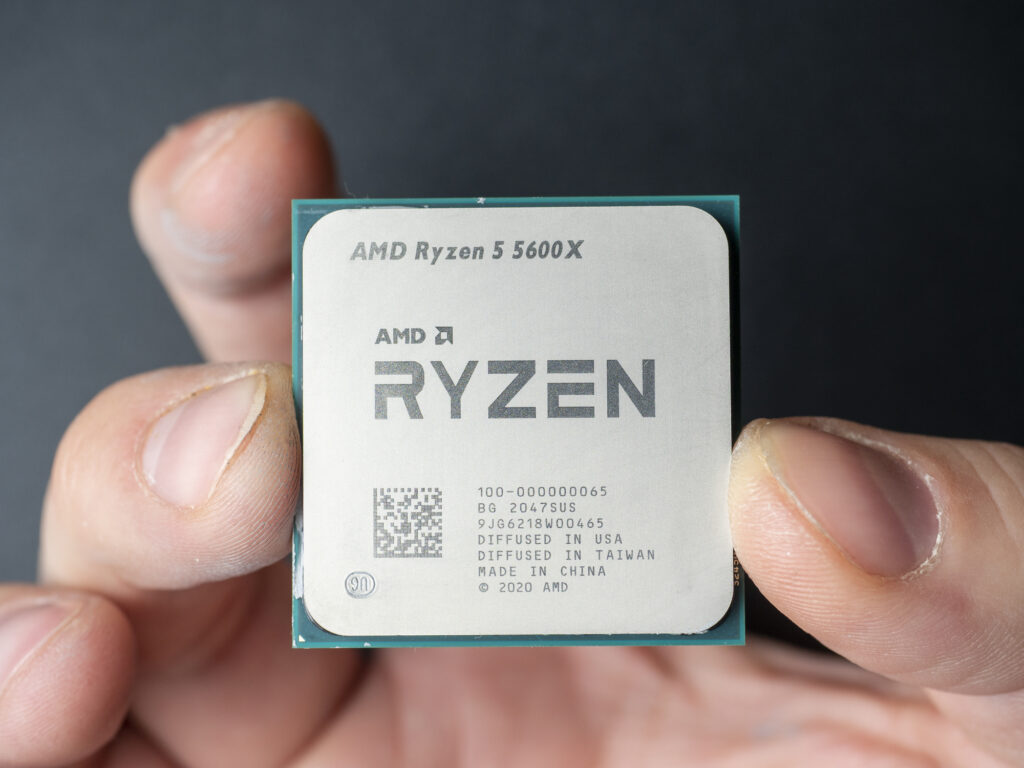
Based on ZEN 2 microarchitecture, these processors are fabricated on a 7 nm TSMC process. With the use of a new socket sTRX-4, these microprocessors do not provide backward capabilities. Furthermore, each model has:
- Up to 64 cores and 128 threads, these beasts can get anything done with great precision.
- Memory support is up to 512 GiB of quad-channel 3200 MT/s DDR4.
- Support much higher TDPs ranging up to 280W power consumption.
- Enhanced performance-maximizing technology of Precision Boost 2, SMEP, AMD-V/Vi, and 2-way SMT.
- Base frequency ranges from 2.9 GHz to Turbo frequency of 4.5 GHz.
- The increased L3 cache memory of 128 MiB and 256 MiB support.
- Introduced a new feature Precision Boost Overdrive responsible for automatic overclocking. (available in ZEN+ microarchitecture)
How Intel CPU is better than Ryzen CPU for Pro Desktops?
On the competitive side, Intel has its Lake-X families that are considered pro-desktop microprocessors. But due to comparatively low core counts than Ryzen Threadrippers, these microprocessors have low overall performance capabilities.
Anyways, the Intel Core i9 -X series are based on Cascade Lake microarchitecture and are fabricated on an ultra-mature 14 nm node process. All models of these flagship processors have in common:
- Up to 32 cores and 64 threads, high-end multi-tasking abilities with hyper-threading.
- Memory support improved up to 256 GiB of quad-channel 2933 MT/s DDR4.
- Frequency ranges from 3.0 GHz base to 4.8 GHz with Turbo Max.
- Enhanced technologies of Turbo Boost 2.0, Turbo Max 3.0 that targets four cores, and DL Boost for maximizing performance.
- An increased bump in clock speeds requires more TDP of up to 280W.
- Improved smart L3 cache memory supports up to 64 MiB.
So, this was a detailed technical analysis of the different features and specifications of each tier. Now it would be much easier for you to understand the further differences between AMD and Intel microprocessors, which we will discuss shortly.
Also, you would have gotten the idea that the ball is pretty much in AMD’s court. But don’t worry, at the end of the article, you will definitely be able to develop a perfect viewpoint that is Ryzen better than intel.
AMD Ryzen CPUs through the Generations
Here we have gathered the information such as model names, release dates, and prices of a few top-of-the-line Ryzen processors categorized generation-wise for ease of your comfort and to provide you with a better perspective.
Also, note that every generation of AMD’s Ryzen CPUs has various models in different price tags beginning from low-end or entry-level to high-end or pro-level depending on the features and specifications we have discussed earlier.
1st Generation Ryzen (ZEN)
AMD’s first-generation Ryzen CPUs are categorized into Ryzen 1000 series based on ZEN microarchitecture, and the following models are included in this series.
- Ryzen 3 1200, Pro 1200, Pro 1300, and 1300-X were released on July 27, 2017, with a price tag of 109$ to 129$.
- Ryzen 5 1400, Pro 1500, 1500-X, 1600, Pro 1600, and 1600-X were released on April 11, 2017, with a price tag of 169$ to 249$.
- Ryzen 7 1700, Pro 1700, 1700-X, and 1800-X were released on March 2, 2017, with a rice tag of 329$ to 499$.
- Ryzen Threadripper 1900-X, 1920-X, and 1950-X were released in August 2017, with a price tag of 549$ to 999$.
2nd Generation Ryzen (ZEN+)
AMD’s second-generation Ryzen CPUs are categorized into Ryzen 2000 series based on ZEN+ microarchitecture and include the following models:
- Ryzen 3 1200-AF and 2300-X were released in April 2020 and September 2018 respectively, with a price tag of 60$.
- Ryzen 5 2500-X, 2600-E, 1600-AF, 2600, and 2600-X were released at the end of 2018, with a price tag of 199$ to 229$.
- Ryzen 7 2700-E, 2700, Pro 2700, Pro 2700-X, and 2700-X were also released in 2018, with a price tag of 299$ to 329$.
- Ryzen Threadripper 2920-X, 2950-X, 2970-X, and 2990-X were released in mids 2018, with a price tag of 649$ to 1799$.
3rd Generation Ryzen (ZEN 2)
AMD’s third-generation Ryzen CPUs are categorized into Ryzen 3000 series based on ZEN 2 microarchitecture and include the following models:
- Ryzen 3 3100 and 3300-X were released on April 22, 2020, with the price tag of 99$ and 120$ respectively.
- Ryzen 5 3500, 3500-X, 3600, Pro 3600, 3600-X, and 3600-XT were released in 2019, with the price tag of 142$ to 249$.
- Ryzen 7 Pro 3700, 3700-X, 3800-X, and 3800-XT were released at the end of 2019 and mids 2020, with a price tag of 329$ to 399$.
- Ryzen 9 3900, Pro 3900, 3900-X, 3900-XT, and 3950-X were released at the end of 2019 and mids 2020, with the price tag of 499$ to 749$.
- Ryzen Threadripper 3960-X, 3970-X, 3990-X, Pro 3945-WX, Pro 3955-WX, Pro 3975-WX, and Pro 3995-WX were released in 2020, with the price tag of 1399$ to 3990$.
4th Generation Ryzen (ZEN 2 Refresh)
AMD’s fourth-generation Ryzen CPUs are categorized into the Ryzen 4000 series based on a refresh of ZEN 2 microarchitecture. All of these processors were only released to OEM manufacturers on July 21, 2020, and include the following models:
- Ryzen 3 4300-GE, Pro 4350-GE, 4300-G, and Pro 4350-G.
- Ryzen 5 4600-GE, Pro 4650-GE, 4600-G, and Pro 4650-G.
- Ryzen 7 4700-GE, Pro 4750-GE, 4700-G, and Pro 4750-G.
5th Generation Ryzen (ZEN 3)
AMD’s fifth-generation Ryzen CPUs are categorized into Ryzen 5000 series based on the new ZEN 3 microarchitecture and include the following models:
- Ryzen 5 5600-X was released on November 5, 2020, with a price tag of 299$.
- Ryzen 7 5800 and 5800-X were released in January 2021 and November 2020 respectively, with a price tag of 449$.
- Ryzen 9 5900, 5900-X, and 5950-X were released on November 5, 2020, with a price tag of 549$ and 799$.
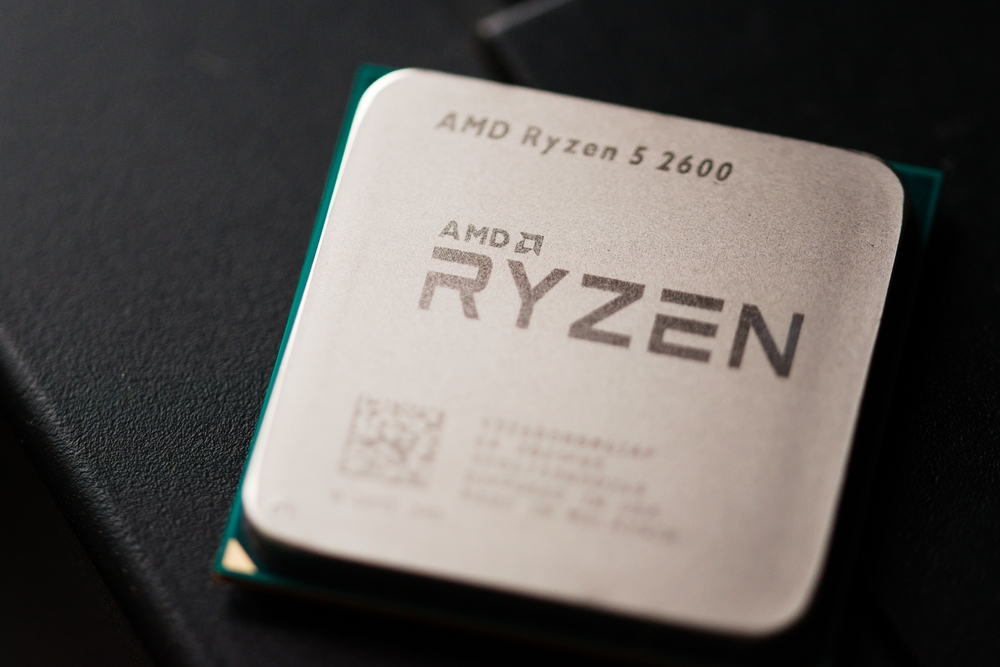
Intel Core CPUs through the Generations
Intel has its CPUs in an entirely different manner. These generations have brought up some serious changes over time. Let’s have a look at them.
8th Generation Core (Coffee Lake)
Intel’s 8th-generation Core CPUs are categorized into S-series based on the Coffee Lake microarchitecture released in October 2017 and include the following models:
- Core i3 8350-K, 8300, 8300-T, 8100, and 8100-T with a price tag of 168$ to 117$.
- Core i5 8600-K, 8600, 8600-T, 8500, 8500-T, 8400, and 8400-T with a price tag of 257$ to 182$.
- Core i7 8086-K, 8700-K, 8700, and 8700-T with a price tag of 425$ to 303$.
9th Generation Core (Coffee Lake Refresh)
Intel’s 9th generation Core CPUs are categorized into S-series based on Coffee Lake Refresh microarchitecture released in the fourth quarter of 2018 and includes the following models:
- Core i3 9350-KF, 9100-F, and 9100 with a price tag of 173$ to 115$.
- Core i5 9600-K, 9600-KF, 9400, and 9400-F with a price tag of 215$ to 157$.
- Core i7 9700-K and 9700-KF with a price tag of 374$ and 320$ respectively.
- Core i9 9900-KS, 9900-K, and 9900-KF with a price tag of 524$ to 488$.
Along with the production of updated high-end versions of previous Skylake X-series CPUs, which include
- Core i7 9800-X with the price tag of 589$
- Core i9 9980-XE, 9960-X, 9940-X, 9920-X, 9900-X, and 9820-X with the price tag of 1979$ to 989$.
10th Generation Core (Comet Lake)
Intel’s 10th-generation Core CPUs are categorized into S-series based on Comet Lake microarchitecture released on August 29, 2019, and include the following models:
- Core i3 10320, 10300, 10100, and 10100-F with a price tag of 154$ to 97$.
- Core i5 10600-K, 10600-KF, 10600, 10500, 10400, and 10400-F with a price tag of 262$ to 157$.
- Core i7 10700-K, 10700-KF, 10700, and 10700-F with a price tag of 374$ to 298$.
- Core i9 10900-K, 10900-KF, 10850-K, 10900, and 10900-F with a price tag of 488$ to 422$.
Along with the updated high-end versions of Cascade Lake X-series CPUs, which include:
- Core i9 10980-XE, 10940-X, 10920-X, and 10900-X with a price tag of 979$ to 590$.
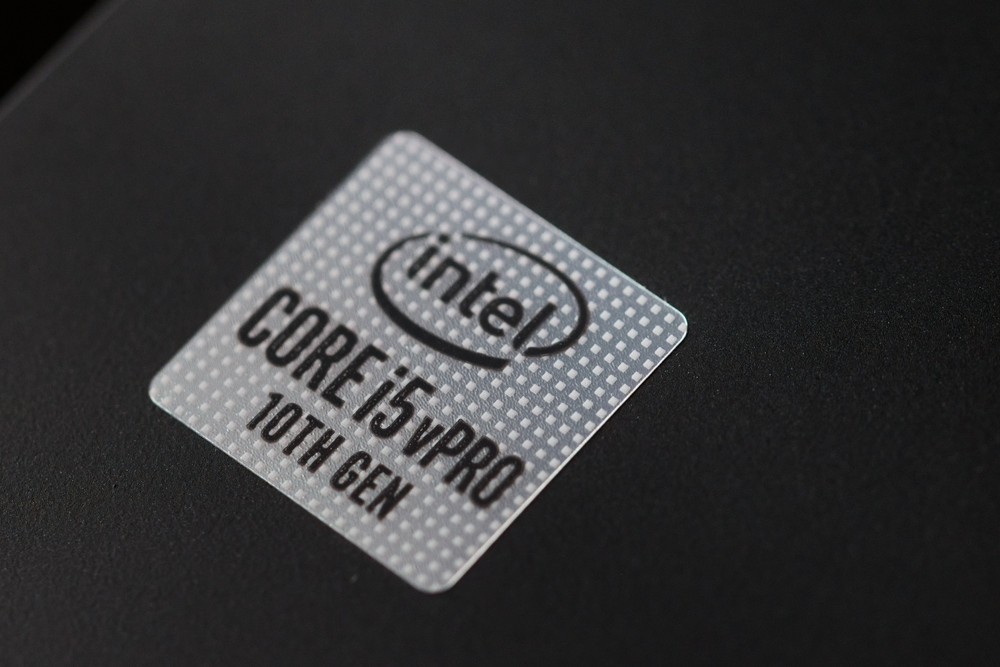
11th Generation Core (Rocket Lake)
Intel’s 11th-generation CPUs are categorized into S-series based on Rocket Lake microarchitecture released on March 30, 2021, and includes the following models:
- Core i5 11600-series, 11500-series, and 11400-series with a price tag of 262$ to 182$.
- Core i7 11700-series with a price tag of 399$ to 323$.
- Core i9 11900-series with a price tag of 539$ to 439$.
AMD Ryzen goes head-to-toe with Intel Core CPUs
This section involves a detailed comparison between AMD’s Ryzen and Intel’s core desktop microprocessors on the basis of their features and specifications. So, if you haven’t read our first section, we suggest you read it. Otherwise, it would be hard for you to keep up with the details.

Clock Speeds Comparison
Let’s start with the high-end desktops. AMD has its Ryzen 9 series of processors with clock speeds of 4.6-4.7 GHz, which is comparably lower than Intel’s Core i9 series of processors with a clock speed of 5.0 GHz.
Making Intel a great choice for those who want to work in single-threaded applications like playing a game, editing photos in photoshop, etc. Now, let’s take a look at the low-end segment.
If you require a basic processor for watching movies or TV Series on Netflix or internet browsing, you will have to choose between AMD’s Ryzen 3 and Intel’s Core i3 desktop processors. Ryzen 3 processors come with a clock speed of up to 4 GHz whereas, Core i3 processors have a clock speed of up to 4.6 GHz.
Again, Intel wins the battle of high clock speeds. However, clock speed is not the only feature you should be looking for when choosing a desktop processor. There are a lot of other aspects too that you have to take into account.
Performance Comparison
When it comes to performance comparison, AMD is definitely in a win-win situation due to its high core and thread count. Again, we will begin with the comparison of the high-end segment first.
AMD has its Ryzen Threadrippers processors that come with the highest core and thread count available in the market right now, with a max of 64 cores and 128 threads. On the other hand, its competitor Intel Cascade Lake-X series have a max of 32 cores and 64 threads.
Now, if we come towards the mid-range desktops, we get up to 6 cores and 12 threads from Ryzen 5 series of microprocessors, and 6 cores and 6 threads from Intel’s Core i5 series. Making a tie of cores but relatively fewer threads in Intel.
Thus, as you can see, AMD provides you with more fast performance capabilities than Intel. Especially in the field of gaming, core count matters a lot. A higher core count is also beneficial for multi-tasking abilities.
Overclocking Comparison
The debate of overclocking remains in favor of Intel as its CPUs have high baseline speeds toping over at 5 GHz in its high-end desktop processors. The k-series chips of Intel provide the best overclocking performance capabilities.
Whereas, AMD due to its comparatively low clocking speeds, is left behind in the battle of overclocking. Even the maximum achievable clock boost with all-cores remains behind Intel’s overall single-core overclocking capabilities, with a few MHz.
However, AMD has made improvements in its memory overclocking in its latest Ryzen 5000 series of desktop processors. This allows AMD to clock to a higher level of memories while maintaining low-latency characteristics to provide good levels of gaming performance.
But in the end, results are in favor of Intel as it has far higher attainable frequencies and much more room for overclocking than its competitor’s counterparts. So, if you want higher overclocking levels, Intel is the best choice.

Compatibility Comparison
Mainly, compatibility depends on two factors, both of which are related to the motherboard. The first is Socket Type, and the second is the chipset used. A simple explanation would be that if the processor can fit into the socket, it will be compatible with the chipset.
Now, in the case of the Ryzen CPUs, AMD has been using the same socket for each tier of its processor. For instance, all the models of Ryzen Threadripper tier use AM4 sockets that are compatible with every model.
So, whenever you feel to upgrade your Ryzen CPU, you wouldn’t need to worry about upgrading the motherboard. Whereas, in the case of “Core i” CPUs, Intel changes its socket type in new generations.
For instance, 9th-generation Intel motherboards make use of LGA-1151 sockets, and 10th-generation motherboards have LGA-1200 sockets, due to which different compatibility problems arise.
Therefore, compatibility comparison goes in favor of AMD since you can easily swap a Ryzen chipset without worrying about buying a new motherboard.
Price Range Comparison
AMD is offering comparatively low prices than its competitor, Intel counterparts. If we take the low-end segment, Intel is providing its flagship Core i7 chips for 350$ that come with 4 cores and 8 threads.
On the other side, AMD offers its Ryzen 3 3100 and Ryzen 3 3300-X processors for 99$ and 120$, respectively. These Ryzen models have the same core and thread count, and the 3300-X processor even provides better performance than Intel 7700-K chips and beats all of its models in the same price range.
Similar is the case of high-end desktop processors, where Ryzen Threadripper 3960-X beats the Intel high-end Xeon W-3265 with the price tags of 1399$ and 3349$ respectively. Both have the same number of cores and threads. Thus, giving the price-to-performance throne in AMD’s hands.
Security Comparison
Security is one of the key factors that can greatly affect the performance of your CPU. Intel, due to its vast market shares, has been the main target of security breaches for a long time. This is mainly because of the use of low-level architecture in Intel microprocessors.
These breaches develop a new set of vulnerabilities that threaten your system’s safety and increase the risk of losing your personal data. If we talk about publicly disclosed security breaches, AMD currently has 16 while Intel has 242.
Making AMD a far more secure microprocessor than Intel. Not only that, AMD has made some new security fixes in its latest Ryzen 5000 series processors, providing more enhanced security levels.
So, to sum up, the security differences between AMD and Intel microprocessors are far too high to ignore. That can change with the gain of AMD’s market shares. As for now, Intel is in drawback.

Heat and Power Consumption Comparison
Heat and power consumption are mainly affected by two factors, the architecture used in the processors and its lithography. However, higher power often correlates to the production of more heat.
Anyhow, the ZEN 3 microarchitecture-based Ryzen processors use 7 nm nodes that significantly reduce the consumption of power and ultimately the production of less heat. Whereas, Intel on the other side, has been stuck with its 14 nm processes.
Although, in these five long years, Intel has made significant improvements in its 14 nm lithography process that strengthens its performance-to-power ratio by 70%. But for greater performance capabilities, it had to turn its power dial-up in new generations.
Making AMD the winner once again because it’s simply impossible to disregard the significance of having a proficient microarchitecture paired with the densest 7 nm TMSC node.
What is a better long-term investment?
The answer to this question greatly depends on your personal and professional needs. If you are looking for a cheap budget processor with a higher money-to-performance ratio, Ryzen definitely is the best choice to go with.
Even at the high-end and premium price tags, AMD offers far greater performances. Especially for intensive multithreaded tasks such as transcoding, video editing, or opening tons of browsing tabs at a time, Ryzen high core processors such as 5950-X would never let you down.
Although, the decreasing prices of Intel’s processors and its high-end new chips are putting it back in the race. But still, the performance gaps are far greater than the price.
But what if you are a digital nomad, and you want a mix of both personal and professional hardware on your arsenal? You are in the right place, pal! Check out this ideal Hardware Setup for Digital Nomads.

Final Remarks
Competition between the CPUs has always been lovely to read. However, in the present era, Ryzen is leading the world of PCs with its beasts like Ryzen Threadrippers that are ripping Intel’s Lake-X series, by all means they could get.
But Intel cannot be pushed out of the Battlefield so easily due to years of services and a long and strong portfolio, as described earlier. Thus, the war is going to last for a longer period, taking into account the more-than-ever advancement of technologies.

